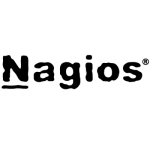What is our primary use case?
We use the solution essentially for the management of the endpoint and the management of assets.
What is most valuable?
The fact that I'm able to see all my devices and the status of them has been extremely useful. It's mainly the device visibility and device status.
The stability has been great.
It is very scalable.
What needs improvement?
We haven't upgraded the SCOM version yet, however, there's a few of the versions where we would like to have improvements in terms of more visibility into some of the details of the device.
We'd like to be able to configure and push more granular policies into the device.
Using iOS is an issue for us. It's not as deep as the Microsoft offering. We'd like more detail in the iOS version. They also need more advanced iOS support.
There is a lack of documentation.
We didn't know the solution enough, and therefore, it took a while to set everything up correctly. There was a learning curve. We'd like more help in planning and training.
For how long have I used the solution?
I've been using the solution for eight years.
What do I think about the stability of the solution?
It really is stable. The performance is good. There are no bugs or glitches.
What do I think about the scalability of the solution?
The solution can scale well. It's actually more suited for larger enterprises.
We didn't have any issues with scalability.
We have about 800 users on the product currently. That's about 1,400 devices.
We use the product fairly regularly.
How are customer service and support?
Technical support takes work. They're knowledgeable, yet it takes a lot of time. You have to go through the reseller first - before you get to speak to Microsoft.
How would you rate customer service and support?
Which solution did I use previously and why did I switch?
We're going to, eventually in the next few years with SCOM, move to the cloud management features of Microsoft.
How was the initial setup?
The initial setup took a lot of time. I can't remember exactly what the timeframe was. However, it took longer than we expected. I'd rate it 2.5 out of five in terms of the ease of setup. While it's not difficult, it does take time. We had to do and redo a few things during implementation. They didn't have any documentation for us to work out of, which would have helped.
What about the implementation team?
We handled the setup ourselves in-house.
What's my experience with pricing, setup cost, and licensing?
I don't have an individual cost for SCOM. We buy all our licenses under the program. We get invoiced for the quantities of each of the products without having an individual cost for SCOM. If you buy certain licenses or servers, SCOM automatically comes with it.
Which other solutions did I evaluate?
At the time, we didn't investigate others. We didn't investigate a lot of other technologies as we're a Microsoft shop. We use Microsoft products. We are resellers. We're distributors of Microsoft. We didn't go much further out from there. Recently, we also haven't investigated a lot. We are starting to research the management of endpoints with the Microsoft cloud platform. That looks a little bit easier right now.
What other advice do I have?
We're using a lot of Microsoft products. We are also resellers and distributors of Microsoft.
Whether this solution works for you or not depends on how you do your model. If you outsource everything, then you don't have the problem even if you're an SMB. However, if you have an IT department inside your organization, you will likely need this.
I'd rate the solution seven out of ten.
Disclosure: My company has a business relationship with this vendor other than being a customer. Reseller / User


















